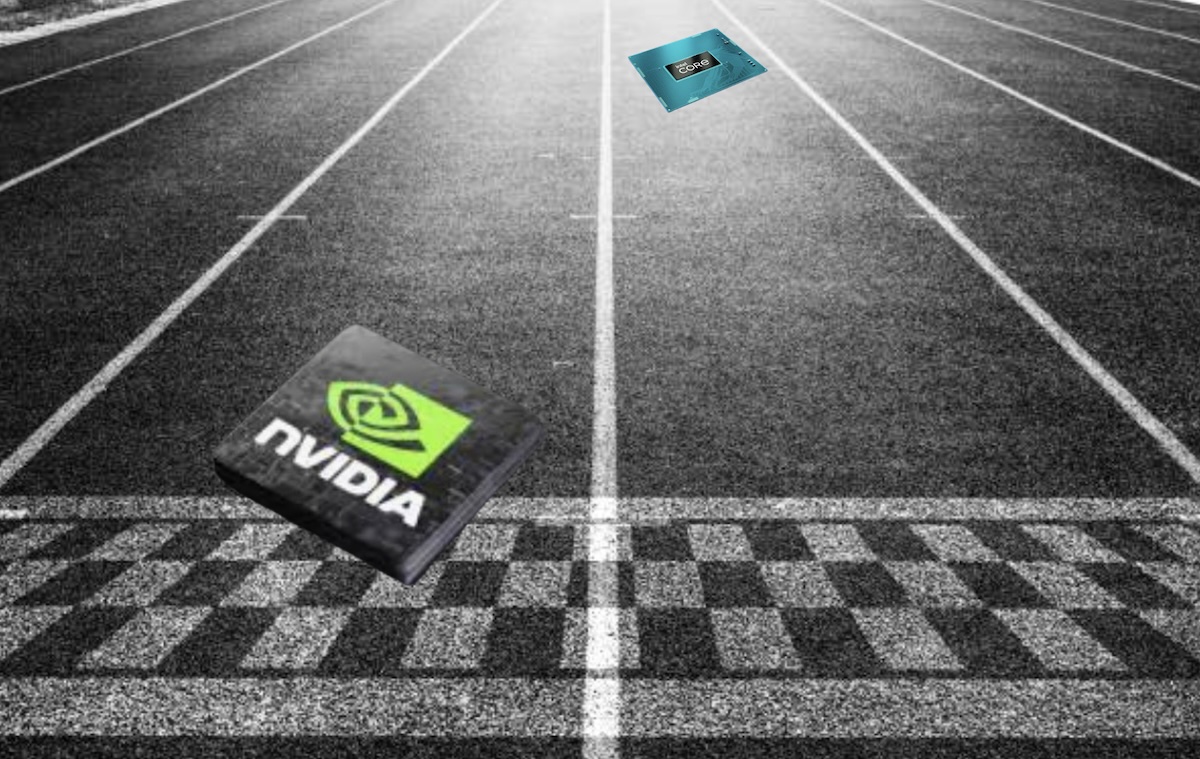While Intel has faced internal and external challenges, one company has seen remarkable growth in the semiconductor industry—Nvidia. With a market valuation more than thirty times that of Intel, Nvidia’s meteoric rise highlights a shift in the tech landscape. The company’s dominance, especially in AI and graphics processing, has allowed it to outperform Intel in ways many never anticipated. Let’s explore how Nvidia managed to leapfrog Intel and why its growth story is one for the history books.
The Intel Struggle: A Stark Contrast to Nvidia’s Growth
Intel, once the undisputed leader in the semiconductor industry, has seen its market share erode in recent years. As it grapples with product delays, declining sales, and increasing competition, the company has faced mounting pressure from investors and rivals alike. The appointment of a new CEO, Lip-Bu Tan, signals a potential new direction for Intel, but the company is still struggling to regain its footing in the rapidly changing tech environment.
Meanwhile, Nvidia’s stock price has soared, propelling the company to a market cap of hundreds of billions. At the close of the last trading session, Nvidia’s valuation dwarfed Intel’s, highlighting a dramatic shift in the semiconductor industry. This contrast is especially apparent in Nvidia’s strength in AI and graphics processing, which has been a key driver of its growth and a major factor in Intel’s decline.
The Nvidia Growth Formula: Dominating AI and Graphics Processing
Nvidia’s rise isn’t a matter of mere chance—it’s a result of strategic decisions made over several years. As Intel has struggled with its transition into new markets, Nvidia has not only capitalized on the growing demand for artificial intelligence but has also dominated the graphics processing unit (GPU) market.
- Leading the AI Revolution:
Nvidia’s GPUs have become the go-to hardware for AI developers. Its products are ideal for machine learning and deep learning, the backbone of the AI revolution. With AI development accelerating across industries—from healthcare to finance—Nvidia has positioned itself as the essential supplier of the chips powering AI innovations. - Graphics Processing Excellence:
Nvidia’s GPUs also power high-performance gaming, data centers, and scientific research. The company’s focus on enhancing its graphics capabilities has kept it at the forefront of the gaming industry, a market Intel has struggled to penetrate. - Strategic Acquisitions and Innovation:
Nvidia’s acquisition of Mellanox Technologies, a leader in high-performance networking, expanded its reach into data centers and cloud computing. Additionally, Nvidia’s focus on the autonomous vehicle industry, with its DRIVE platform, shows that it’s positioning itself for future growth in diverse sectors.
The Stock Surge: What Investors See in Nvidia
Nvidia’s rapid stock price increase reflects investor confidence in its leadership and innovation. Unlike Intel, which faced declining revenue in its core business, Nvidia has consistently exceeded earnings expectations. In fact, Nvidia’s market cap has skyrocketed, overshadowing Intel’s $89.5 billion market cap by more than 30 times. The dramatic contrast in valuation is indicative of how investors view the future potential of both companies.
While Intel’s challenges with AI and its semiconductor manufacturing business have impacted its stock, Nvidia’s growth story continues to attract attention. Investors see Nvidia as the leader in next-generation technologies like AI and autonomous vehicles, while Intel is still trying to regain its footing in the market.
Intel vs Nvidia: The Battle for Semiconductor Supremacy
The semiconductor industry is one of the most competitive and fast-paced sectors in the global economy. With the rise of AI, 5G, and the increasing demand for high-performance computing, the battle between Intel and Nvidia has become more intense. Intel’s struggles are well-documented, but the company’s effort to reinvent itself under new leadership—coupled with its significant investments in manufacturing plants and AI technologies—could lead to a long-awaited comeback.
Nvidia, on the other hand, has secured its position as a leader in the AI and GPU space, continually innovating and expanding into new markets. Its rapid growth highlights the success of its forward-looking strategy and its ability to capitalize on emerging trends. If Nvidia continues to execute its vision, it will likely maintain its competitive advantage, but Intel’s potential resurgence under new CEO Lip-Bu Tan could set the stage for an exciting next chapter in the semiconductor industry.
What’s Next for Nvidia?
Nvidia’s future looks incredibly promising, with ongoing investments in AI, gaming, and autonomous vehicles. The company is expected to maintain its leadership in GPU development while continuing to innovate in other cutting-edge technologies.
As AI adoption continues to rise across various sectors, Nvidia’s GPUs will be at the heart of this transformation. The company’s ability to anticipate and lead in new markets, coupled with its strong financials, will help it sustain its growth trajectory in the years to come.
Nvidia’s Strategic Advantage and Intel’s Road to Recovery
Nvidia’s explosive growth and market dominance, particularly in AI and graphics processing, are in stark contrast to Intel’s struggles in a rapidly evolving tech landscape. While Intel faces internal challenges and external competition, Nvidia’s strategic foresight and innovation have propelled it to the forefront of the semiconductor industry.
As Intel attempts a leadership change with new CEO Lip-Bu Tan, it remains to be seen whether the company can reverse its fortunes and catch up to Nvidia. However, one thing is clear: Nvidia’s rise to prominence has set a new benchmark for success in the semiconductor industry, and it’s a story that investors and tech enthusiasts alike will continue to watch closely.




